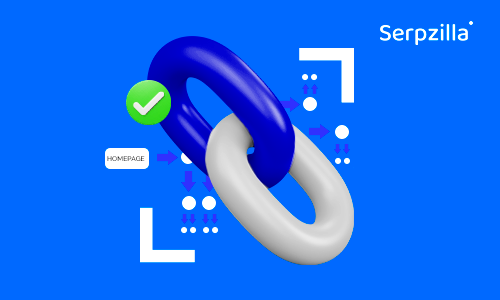Consumers continue to look for services, shops, and providers right in their neighbourhood; the difference now is how they search, and what the AI-driven systems expect from local businesses. In this article, we’ll explore how AI is reshaping local SEO, what that means for small businesses trying to dominate their geographic footprint, and how to build a solid local GEO strategy. We’ll also look into local brand promotion on AI search engines and AI search optimization for local businesses.
Why Local SEO Still Matters in the Days of AI Search
Local still converts, even with AI-first search paradigms gaining traction. Here are a couple of reasons for this:
- AI still needs sources. When AI composes a local answer, it relies on structured, consistent, high-authority local signals. If you’re not in that corpus, you won’t be in the answer.
- Commercial intent is obvious. Local searches always come from people who are ready to act, not just browsing out of boredom. Every impression has purchase intent behind it.
- AI answers and map packs now share the stage. Ranking in one doesn’t guarantee the other, so your local strategy should target both. Shoot for structured content for AI summaries and optimized GBP data for map results.
- Proof beats promises. Reviews, photos, hours, service menus, and local landing pages still do the heavy lifting, AI just reads them faster.
- AI amplifies, not replaces, local SEO. It speeds up execution, but strategy, authenticity, and accurate data are still what make you visible in your city or area.
So, does AI help with local SEO for small businesses? AI has simply raised the bar for local SEO. Clean signals, proof-driven content, and real customer trust are what now define visibility.
How AI Is Changing Local Search Behavior
Yes, traditional local SEO still gets the job done, but keep in mind that a few major factors are now at play.
The rise of hyper-local intent
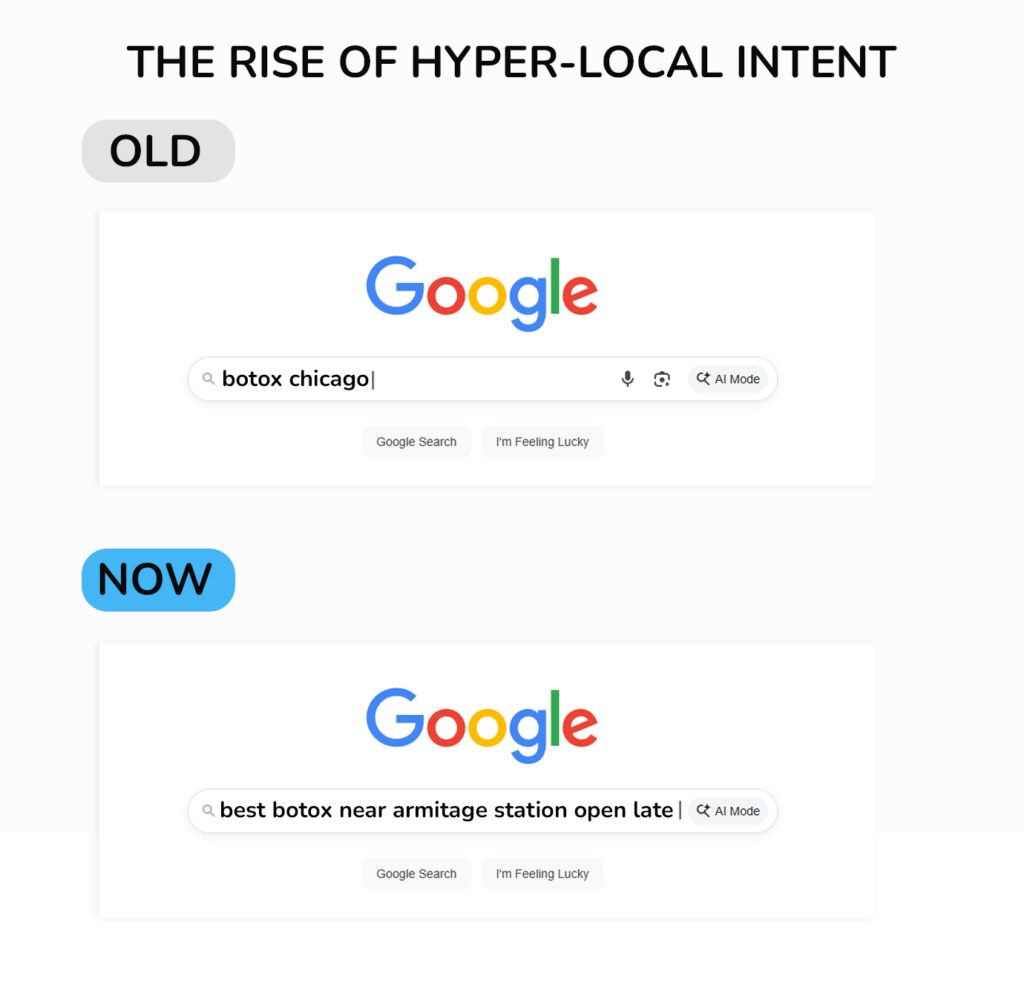
AI-driven SEO for local search optimisation means mapping long-tail conversational queries to micro-areas, landmarks, and time windows. It’s a good idea to build intents around:
- Micro-geos like neighborhoods, cross-streets, transit stops
- Situational cues like “open now,” “after work,” “kid-friendly,” “parking”
- Outcome words like “same-day,” “under €300,” “before wedding,” “no downtime”
AI’s impact on Google Business Profiles (GBP)
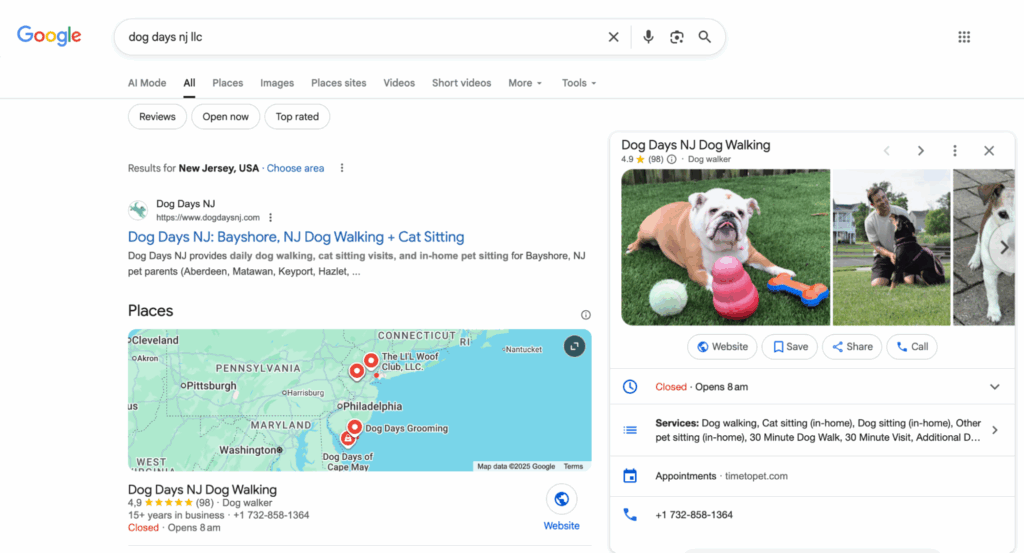
GBP acts like your machine-readable storefront. AI evaluates completeness, freshness, consistency, and sentiment. You might want to tighten the following:
- Primary + secondary categories (don’t be generic)
- Service list with geo modifiers
- Photos that prove reality (exterior, interior, staff, service results)
- Weekly posts with local hooks and offers
- Q&A seeded with real questions customers ask
AI’s limitations in local awareness
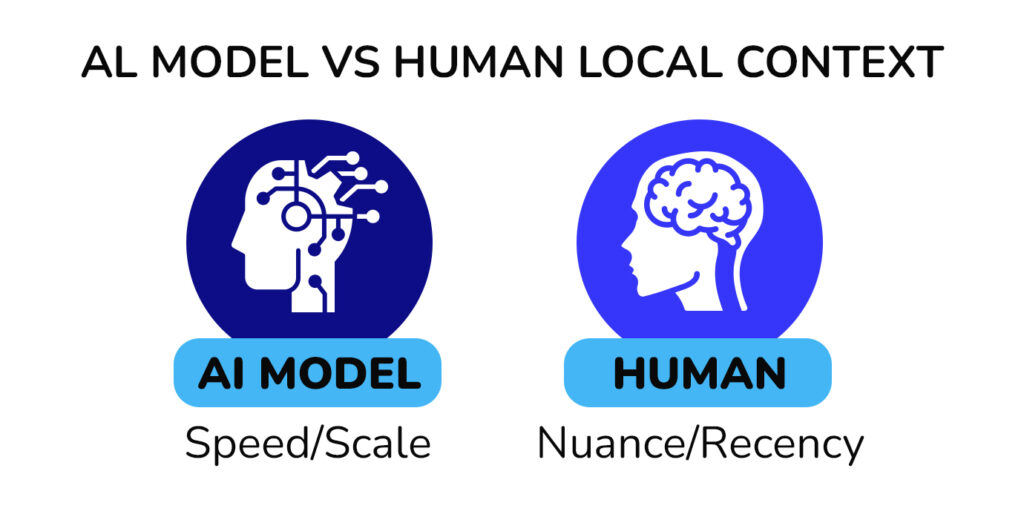
AI sees patterns, while locals feel context. In other words, an algorithm can miss stuff like new venues, slang for micro-districts, seasonal shifts, building entrances, recent moves.
Your best bet here is to pair local AI web search with human QA. You feed the model the right nouns, and humans validate the nuance.
Benefits of Optimizing Local SEO With AI
Despite several limitations, AI is a great item in your local SEO toolbox. Benefits of optimizing for local seo with AI might depend on your niche, but here are some common ones:
| Advantage | What AI delivers | Best for |
| Faster local intent discovery | Long-tail, neighborhood queries surfaced early | Busy small teams |
| Consistent listings at scale | Fewer NAP errors, more trust signals | Multi-location brands |
| Review velocity and quality | Drafted replies, sentiment spotting | Service businesses |
| Content at neighborhood depth | Dozens of micro-pages without bloat | Clinics, trades, hospitality |
| Better decision loops | Trend alerts, competitor move detection | Owners/marketers who iterate fast |
AI-Driven Local SEO Tactics That Work
Now, let’s take a more detailed look at what you can do to plug AI into your local SEO workflow for better business results.
1. Smart keyword discovery for local queries
Use AI tools for local SEO small businesses to mine various search factors for your local area. This includes:
- Neighborhood + service combos (“Lakeview lip flip,” “De Pijp deep tissue”)
- Outcome + constraint combos (“under €200,” “open Sunday,” “no wait”)
- Landmark hooks (“near Lincoln Park Zoo,” “by Leidseplein tram”) — this one is especially effective for visitors not native to the area
The common AI SEO tools for these purposes are:
- Surfer or Semrush Keyword Magic Tool for identifying local long-tail and intent-based keywords tied to specific neighborhoods or services
- ChatGPT or Gemini for expanding real conversational queries (especially voice-style searches)
- AlsoAsked or AnswerThePublic for discovering location-specific questions and phrasing your audience actually uses
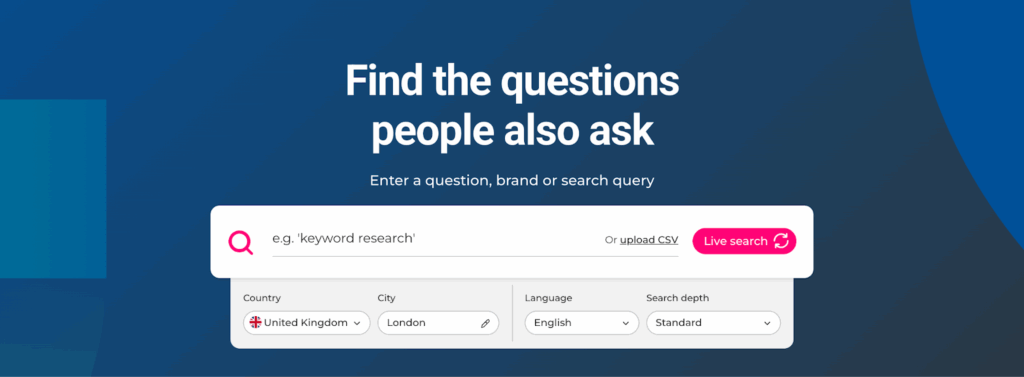
AlsoAsked keyword search.
Pro tip: Feed these combos into your page H1/H2s, service blocks, FAQs, GBP services, and Posts. Track impressions, calls/chats, and booked appointments.
2. Managing Google Business Profile with AI
AI is best at the day-to-day GBP upkeep: spotting changes, drafting updates, and flagging issues before they snowball. You just approve the output.
Here are a couple of industry-specific workflows where AI gives you leverage, while human QA keeps everything accurate and on-brand.
Med spa
- Draft weekly GBP posts tied to micro-areas (one of the best AI-based tactics for med spa local search ranking)
- Write outcome-focused service blurbs (“softening 11s,” “lip flip”)
- Surface review patterns + generate response drafts
Restaurant
- Identify “open late/takeout near me” gaps and suggest hour/menu tweaks
- Generate photo prompts for better GBP visuals
- Draft Q&A for common customer questions
Home services
- Produce neighborhood-specific emergency FAQs
- Suggest new service-area pages based on demand
- Flag competitor category/service updates
Clinic/Dental
- Draft treatment FAQs with insurance notes
- Recommend missing schema fields for practitioner credibility
- Create recall/check-up reminder Posts.
Pro tip: Prioritize AI tasks that tie back to conversions (reviews, Posts, service descriptions, FAQs). These influence calls and bookings far more than generic content.
AI for citation management and NAP consistency
NAP = Name, Address, Phone. These three fields are how Google and AI systems verify your business identity. When they’re inconsistent across directories or listings, algorithms lose confidence and customers get confused. One outdated address or wrong phone number can tank conversions fast.
Use AI to:
- Crawl and compare all mentions of your name, address, and phone number
- Prioritize high-authority directories first, then niche ones
- Detect duplicates and suppress them
- Suggest missing categories/attributes per directory
This is classic AI GEO optimization for local search: clean signals, everywhere.
Scaling hyperlocal content with AI

Hyperlocal content works because it speaks the exact language of a neighborhood: the landmarks people use, the routes they take, the problems they have in that specific part of the city. The challenge is scale. Doing it for ten or twenty quickly becomes impossible without help.
AI makes this manageable. You can feed it your core service info, the neighborhoods you target, and the typical customer questions or situations you handle there. AI turns that into draft landing pages, GBP posts, short FAQs, or even scripts for quick social videos. Then your job is to polish the details. You can add real photos, adjust tone, confirm directions/landmarks, and plug in actual customer proof.
This approach works extremely well for intent-driven industries like med spas, clinics, trades, real estate, and restaurants (basically anything where “location + service” is the main entry point to conversion).
Prompt example:
“Write a 350-word landing page for a med spa offering Botox in Lincoln Park, Chicago near Armitage & Halsted. Include local landmarks, typical after-work appointment demand, benefits for ‘11s’ and forehead lines, parking/transport notes, and a CTA for ‘free consult this week.’ Tone: clear, confident, no buzzwords.”
Building Authority: Links, Reviews and EEAT in Local AI Search
Hyperlocal content gets you in the game, but authority decides whether AI systems trust and surface your business. Once your pages, GBP, and local signals are in place, the next layer is proving that you’re credible. Links, reviews, and EEAT become the reinforcement that lets algorithms know people can rely on you and your product.
Here’s how each factor plays in:
- Reviews. Volume, recency, and specifics are very important here. Encourage customers to mention the service they used, the neighborhood they’re from, and the result they got — these details strengthen both human trust and AI understanding. AI can draft reply variants to keep responses fast and consistent, while you simply approve.
- EEAT. Show expertise and trust with specifics: who provides the service, what credentials they hold, where the work happens, and what outcomes real customers see. Support this with clear bios, verifiable licenses, photos, maps, and before/after examples, all marked up with the right schema markup so AI can interpret it cleanly.
- Links. Local authority still travels through links and/or mentions. Niche-relevant, city-adjacent placements and context-rich mentions always win over generic directories, so make sure you target those.
Pro tip: Use Serpzilla to source the right links for your GEO strategy. Build links in the order they impact your local visibility. Start with locally trusted publications or neighborhood guides. Thanks to Serpzilla’s filters, you can quickly find sites that already rank for your target areas and services.
Measuring Success in AI-Driven Local SEO
Once the foundations are in place, you need to know whether your AI-driven local SEO efforts are working effectively.
Track weekly:
- GBP views
- Direction requests
- Calls and messages
- Post CTR
Track monthly:
- Map pack ranks by neighborhood
- Local page conversions
- Review volume/ratings
- Citation health
- Assisted conversions from local content
Your signals of clear success will include: more non-branded calls/chats, rising “near me” impressions, expanding visibility in adjacent neighborhoods, and higher inclusion in AI-style answer boxes.
Here’s a quick comparison of metrics in traditional SEO and AI-assisted local SEO for reference:
Traditional vs AI-assisted local SEO
| Metric type | Traditional local SEO | AI-assisted local SEO |
| Keyword Discovery | Focuses on basic city + “near me” terms | Surfaces micro-areas, intent phrases, outcome-based queries |
| Content Approach | Broad, city-level service pages | Neighborhood-specific content written in natural, voice-like language |
| Listings Management | Manual updates across directories | Automated scanning, correction, and update alerts |
| Review Workflow | Manually requesting and replying | AI drafts replies, spots sentiment trends, and flags issues |
| Analytics | Monthly/quarterly reports with lag | Real-time signals, anomaly detection, and competitor diffs |
What to Avoid When Working with AI Local SEO
Even with solid processes, AI can create new problems if you set no guardrails. Watch out for these pitfalls that might quietly hurt your brand’s trust and visibility:
⚠️ Inconsistent NAP. Keep your Name, Address, Phone 100% aligned across every listing. Small mismatches confuse both algorithms and customers.
⚠️ Over‑automation. AI can draft, but it can’t verify info. Always give public-facing updates a quick human pass.
⚠️ Ignoring schema updates. Structured data always evolves. Outdated or missing schema weakens your credibility to AI systems.
⚠️ Thin hyperlocal pages. Every micro‑area page needs real substance like photos, directions, unique benefits, and reviews. AI drafts the base, but you need to add the proof.
Wrap Up: How Local SEO Can Transform in the AI Era
AI takes over more of the search experience, so as you can see, local SEO is shifting from a checklist of optimizations to an ongoing conversation between your business and the systems interpreting it. The fundamentals stay the same, with clear data, useful content, real-world proof, but the way they’re discovered and presented becomes more personalized and tied to context.
Here’s where things are heading:
- Geo‑personalized answers. AI will shape results based on tiny context cues (where someone is standing, the time of day, and their past behavior in that neighborhood)
- AI‑tuned local ads. Creative and targeting will respond to micro‑moments (“coffee before the 8 AM train,” “quick dinner near De Pijp after 9”)
- Multimodal “near me”. Think voice, camera, AR overlays, all merging to guide people straight to a storefront or service.
- Agentic discovery. Personal AI agents will be comparing local businesses using EEAT, reviews, availability, and relevance, then recommending the best match.
To stay prepared and change-ready, keep your local data clean, your content genuinely tied to place, and your authority signals consistent.
FAQ
How do AI-driven search engines choose which local businesses to highlight?
They recognize strong NAP consistency, dense local content, credible links/mentions, review quality, and clear schema. Fresh GBP activity also helps.
Can AI replace traditional citation building?
No. AI speeds discovery and correction. You still need to choose quality directories and niche listings, and you still build local partnerships for the best links.
What’s the role of structured data in local SEO with AI?
It works like your brand’s dictionary. LocalBusiness, Service, FAQPage, Review make you machine-readable and eligible for rich features.
How does AI handle “near me” differently than Maps?
AI parses more nuance (time, price, outcome), may surface direct answers, and will still reference your GBP and pages. Optimize for both.
Are AI-driven local tactics effective for service businesses vs. eСommerce?
When it comes to AI-driven tactics, service businesses benefit most (clear geo + outcome intent). eCommerce with stores can still benefit from them by tying inventory and pickup to local pages.
What budget should a small business allocate to AI local SEO tools?
Start lean: listings + review + content assist will be enough, at about $150–$400/month. Add competitive tracking and link sourcing as ROI proves out.






